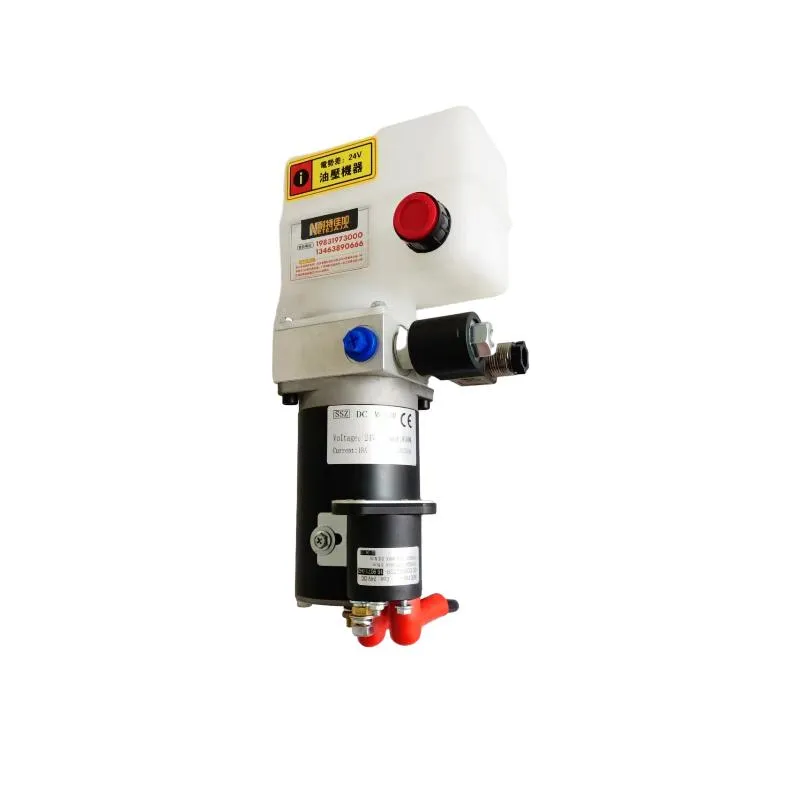Nov . 08, 2024 04:46 Back to list
Hydraulic Cylinder Leak Solutions and Prevention Techniques for Enhanced Performance and Longevity
Understanding Hydraulic Cylinder Leakage Causes, Consequences, and Solutions
Hydraulic cylinders are essential components used in various machinery and equipment across industries, providing the necessary force and motion to perform tasks efficiently. However, one common issue that can significantly impair their performance is leakage. A leaking hydraulic cylinder can lead to diminished function, increased costs, and safety hazards. This article delves into the causes, consequences, and solutions related to hydraulic cylinder leaking products.
Causes of Hydraulic Cylinder Leakage
Hydraulic cylinder leakage can arise from multiple factors, primarily related to wear and tear, poor maintenance, and environmental conditions. Here are some common causes
1. Worn Seals and Gaskets Over time, the seals and gaskets within a hydraulic cylinder can degrade due to age, heat, and exposure to hydraulic fluids. This degradation can lead to gaps through which hydraulic fluid may escape.
2. Damaged Rods Scratches, dents, or corrosion on the surface of the hydraulic rod can compromise the integrity of the seals. When the rod is damaged, it can disturb the sealing surface, leading to leaks.
3. Incorrect Installation If a hydraulic cylinder is not properly installed, it can cause misalignment, which can place undue stress on the seals and cause them to fail prematurely.
4. Overpressure Each hydraulic cylinder is rated for a specific pressure range. Exceeding this range can cause the seals to give way, leading to leaks.
5. Contaminated Fluids The presence of dirt, debris, or moisture in hydraulic fluids can lead to premature wear of seals and other internal components, thereby increasing the likelihood of leaks.
6. Temperature Fluctuations Hydraulic fluids can expand and contract with temperature changes. If the temperature exceeds the fluid’s rated limits, it can cause seals to deform and leak.
Consequences of Leaks
The implications of a leaking hydraulic cylinder can be significant, impacting both operational efficiency and safety
1. Reduced Performance Even a minor leak can lead to a drop in the overall efficiency of the hydraulic system. This can result in slower operation speeds and reduced lifting capacity, ultimately affecting productivity.
hydraulic cylinder leaking product

2. Increased Operational Costs Leaks can lead to higher fluid consumption as the system compensates for the lost fluid. This not only increases costs for replacement fluids but may also increase maintenance needs.
3. Environmental Concerns Hydraulic fluid leaks can pose environmental hazards, leading to soil and water contamination. Many hydraulic fluids are toxic, and their leakage can have long-term effects on the ecosystem.
4. Safety Risks A leaking hydraulic cylinder can lead to sudden system failures. This can pose severe safety risks to operators and nearby personnel, potentially resulting in accidents or injuries.
Solutions to Prevent and Address Leakage
Addressing hydraulic cylinder leakage requires a proactive approach. Here are some recommended solutions
1. Regular Maintenance Routine inspection and maintenance of hydraulic cylinders can help identify early signs of wear and prevent leaks. This includes checking seals, gaskets, and fluid levels regularly.
2. Quality Components Investing in high-quality hydraulic components can reduce the frequency of leaks. Utilize seals and gaskets made from durable materials resistant to heat and chemical exposure.
3. Proper Installation Ensuring that hydraulic cylinders are installed correctly will minimize the risks of misalignment and stress on seals. Engaging professionals for installation can guarantee adherence to best practices.
4. Monitoring Pressure and Temperature Implement systems to monitor pressure and temperature within hydraulic systems actively. This helps prevent overpressure and ensures that conditions remain within safe operational limits.
5. Use of Filters Installing filters in the hydraulic system can help prevent contaminants from causing damage to cylinder components. Regularly replacing these filters will aid in prolonging the life of the hydraulic cylinder.
6. Emergency Response Plans Establish plans and protocols for addressing leaks immediately when they occur. This may include fluid containment measures and training for personnel on how to handle hydraulic fluid spills.
Conclusion
Hydraulic cylinder leakage is a common issue that can have serious consequences if not addressed promptly. Understanding the potential causes and implementing preventative measures can help organizations maintain the efficiency and safety of their hydraulic systems. By committing to regular maintenance and leveraging high-quality components, businesses can minimize the risks associated with hydraulic cylinder leaks and ensure smooth operational capabilities.
-
Fork Lift Power Units - Hebei Shenghan | Efficiency, Reliability
NewsJul.13,2025
-
1.5-Ton Turbocharged Cylinder-Hebei Shenghan|Hydraulic Solution,Energy Efficiency
NewsJul.13,2025
-
Auto Hoist Power Units-Hebei Shenghan|Efficiency&Industrial Lifting
NewsJul.13,2025
-
Double Acting Power Units-Hebei Shenghan|Hydraulic Solutions,Industrial Efficiency
NewsJul.13,2025
-
1.5 Ton Lifting Cylinder 70/82-40-290-535 - High-Performance Hydraulic Solution | Hebei Shenghan
NewsJul.13,2025
-
Fork Lift Power Units - Hebei Shenghan | Efficiency&Reliability
NewsJul.13,2025
